Dielectric-Based Estimation of HMA Dynamic Modulus
Abstract
1. Introduction
2. Methodology
2.1. Materials and Sample Preparation
2.2. Dielectric Constant Measurement
2.3. Dynamic Modulus Measurement
2.4. Dynamic Modulus Estimation
3. Data Analysis and Results
3.1. Dielectric Values
3.2. Relationship Between HMA Dielectric Value and Air Void and Binder Content
3.3. Development of E* Predictive Algorithm
3.4. Model Verification
4. Conclusions
- Dielectric constant measurements at the top and bottom of the specimens are more homogeneous compared to the measured dielectric constant at the side of the specimens. This may be attributed to factors such as minor compaction variability along the specimen height, slight differences in surface texture due to coring and cutting processes or challenges in achieving full and uniform contact between the curved probe and the side surface.
- The dielectric constant values of open-graded mixes, which have higher air void content, exhibited higher dielectric constant values compared to dense-graded mixtures. This stands in contrast with the international literature but is attributed to the fact that open-graded mixes contain slag aggregates, which by nature are highly conductive.
- For dense-graded mixtures, a clear inverse relationship was observed between dielectric constant and air void content, consistent with findings in the literature. The correlation was weaker in open-graded mixtures, likely due to increased heterogeneity and the influence of conductive slag aggregates. Further, the weaker correlations observed for OG mixes could be attributed to the limited dataset. Therefore, further studies incorporating a larger number of OG mixtures are necessary to confirm these findings.
- Significant correlations were found between dielectric constant and the volumetric parameter Vbeff/(Vbeff +Va), particularly for DG mixes, indicating that εr reflects both air void and binder characteristics.
- Substituting volumetric variables with εr values (top and bottom of the specimen, side of the specimen and average of all measurements) led to the development of three predictive algorithms for each mix type. The model incorporating dielectric measurements from the top and bottom specimen surfaces exhibited the best performance. Therefore, two models were developed based on the proposed dielectric-based modulus estimation (DIME) approach: one tailored for dense-graded mixtures and another for open-graded mixtures.
- The weak correlations between ϵr and volumetric properties for OG mixtures may suggest limited predictive reliability of the DIME_OG model. Therefore, this model could be considered preliminary but forms a solid basis for further validation with a broader OG dataset.
- Verification using an independent set of DG and OG specimens yielded strong results, with regression slopes near unity and low SSE values, further validating the robustness of the proposed models.
- The use of dielectric measurements instead of extensive modulus testing presents a practical solution for pavement engineers, significantly reducing testing time and costs while maintaining reliable accuracy.
Author Contributions
Funding
Data Availability Statement
Conflicts of Interest
References
- Baltrušaitis, A.; Vaitkus, A.; Smirnovs, J. Asphalt Layer Density and Air Voids Content: GPR and Laboratory Testing Data Reliance. Balt. J. Road Bridge Eng. 2020, 15, 93–110. [Google Scholar] [CrossRef]
- Cao, Q.; Al-Qadi, I.L. Development of a Numerical Model to Predict the Dielectric Properties of Heterogeneous Asphalt Concrete. Sensors 2021, 21, 2643. [Google Scholar] [CrossRef]
- Chen, Y.; Li, F.; Zhou, S.; Zhang, X. Improved Density Prediction Model Based on Global Optimization Algorithm for GPR System. Measurement 2024, 237, 115243. [Google Scholar] [CrossRef]
- Abufares, L.; Al-Qadi, I.L. Development of Aggregate Dielectric Constant Database Protocol for Asphalt Concrete Density Prediction. Transp. Res. Rec. 2024, 2678, 376–388. [Google Scholar] [CrossRef]
- Georgouli, K.; Plati, C. Dielectric Response of Asphalt Mixtures and Relationship to Air Voids and Stiffness. Constr. Mater. 2024, 4, 566–580. [Google Scholar] [CrossRef]
- Cao, Q.; Al-Qadi, I.L. Effect of Moisture Content on Calculated Dielectric Properties of Asphalt Concrete Pavements from Ground-Penetrating Radar Measurements. Remote. Sens. 2022, 14, 34. [Google Scholar] [CrossRef]
- Steiner, T.; Hoegh, K.; Teshale, E.Z.; Dai, S. Method for Assessment of Modeling Quality for Asphalt Dielectric Constant to Density Calibration. J. Transp. Eng. Part B Pavements 2020, 146, 04020054. [Google Scholar] [CrossRef]
- Primusz, P.; Abdelsamei, E.; Ali, A.M.; Sipos, G.; Fi, I.; Herceg, A.; Tóth, C. Assessment of In Situ Compactness and Air Void Content of New Asphalt Layers Using Ground-Penetrating Radar Measurements. Appl. Sci. 2024, 14, 614. [Google Scholar] [CrossRef]
- Liu, Q.; Lu, J.; Zhang, Z.; Chen, Z.; Wang, T.; Zheng, Q. Comprehensive Study on Dynamic Modulus and Road Performance of High-Performance Asphalt Mixture. Buildings 2024, 14, 3643. [Google Scholar] [CrossRef]
- Georgouli, K.; Loizos, A.; Plati, C. Calibration of Dynamic Modulus Predictive Model. Constr. Build. Mater. 2016, 102, 65–75. [Google Scholar] [CrossRef]
- Solatifar, N. Performance Evaluation of Dynamic Modulus Predictive Models for Asphalt Mixtures. J. Rehabil. Civ. Eng. 2020, 8, 87–97. [Google Scholar] [CrossRef]
- Zhang, D.; Birgisson, B.; Luo, X. A New Dynamic Modulus Predictive Model for Asphalt Mixtures Based on the Law of Mixtures. Constr. Build. Mater. 2020, 255, 119348. [Google Scholar] [CrossRef]
- Gong, H.; Sun, Y.; Dong, Y.; Han, B.; Polaczyk, P.; Hu, W.; Huang, B. Improved Estimation of Dynamic Modulus for Hot Mix Asphalt Using Deep Learning. Constr. Build. Mater. 2020, 263, 119912. [Google Scholar] [CrossRef]
- Golafshani, E.M.; Behnood, A.; Karimi, M.M. Predicting the Dynamic Modulus of Asphalt Mixture Using Hybridized Artificial Neural Network and Grey Wolf Optimizer. Int. J. Pavement Eng. 2021, 24, 2005056. [Google Scholar] [CrossRef]
- Al-Tawalbeh, A.; Sirin, O.; Sadeq, M.; Sebaaly, H.; Masad, E. Evaluation and Calibration of Dynamic Modulus Prediction Models of Asphalt Mixtures for Hot Climates: Qatar as a Case Study. Case Stud. Constr. Mater. 2022, 17, e01580. [Google Scholar] [CrossRef]
- Xu, W.; Huang, X.; Yang, Z.; Zhou, M.; Huang, J. Developing Hybrid Machine Learning Models to Determine the Dynamic Modulus (E*) of Asphalt Mixtures Using Parameters in Witczak 1-40D Model: A Comparative Study. Materials 2022, 15, 1791. [Google Scholar] [CrossRef]
- Worthey, H.; Yang, J.J.; Kim, S.S. Tree-Based Ensemble Methods: Predicting Asphalt Mixture Dynamic Modulus for Flexible Pavement Design. KSCE J. Civ. Eng. 2021, 25, 4231–4239. [Google Scholar] [CrossRef]
- Aidara, M.L.C.; Ba, M.; Carter, A. Development of a Dynamic Modulus Prediction Model for Hot Mixture Asphalt and Study of the Impact of Aggregate Type and Its Electrochemical Properties. Open J. Civ. Eng. 2020, 10, 213–225. [Google Scholar] [CrossRef]
- Moussa, G.S.; Owais, M. Pre-Trained Deep Learning for Hot-Mix Asphalt Dynamic Modulus Prediction with Laboratory Effort Reduction. Constr. Build. Mater. 2020, 265, 120239. [Google Scholar] [CrossRef]
- Chen, F.; Balieu, R. A State-of-the-Art Review of Intrinsic and Enhanced Electrical Properties of Asphalt Materials: Theories, Analyses and Applications. Mater. Des. 2020, 195, 109067. [Google Scholar] [CrossRef]
- Cui, L.; Ling, T.; Sun, F.; Zhang, Z.; Xin, J. Study of In Situ Dynamic Modulus Prediction of Asphalt Mixture Utilizing Ground-Penetrating Radar Technology. Constr. Build. Mater. 2022, 350, 128695. [Google Scholar] [CrossRef]
- EN 12697-31; Bituminous Mixtures—Test Methods—Part 31: Specimen Preparation by Gyratory Compactor. European Committee for Standardization: Brussels, Belgium, 2019.
- AASHTO T 342-22; Standard Method of Test for Determining Dynamic Modulus of Hot Mix Asphalt (HMA). American Association of State Highway and Transportation Officials: Washington, DC, USA, 2022.
- EN 12697-6; Bituminous Mixtures—Test Methods—Part 6: Determination of Bulk Density of Bituminous Specimens. European Committee for Standardization: Brussels, Belgium, 2020.
- EN 12697-08; Bituminous Mixtures-Test Methods-Part 8: Determination of Void Characteristics of Bituminous Specimens. European Standard: Brussel, Belgium, 2019.
- Barbu, B.G.; Scullion, T. Repeatability and Reproducibility Study for Tube Suction Test; Report FHWA/TX-06/5-4114-01-1; Texas Transportation Institute, The Texas A&M University System College Station: College Station, TX, USA, 2005. [Google Scholar]
- AASHTO TP 62; Standard Method of Test for Determining Dynamic Modulus of Hot Mix Asphalt (HMA). American Association of State Highway and Transportation Officials: Washington, DC, USA, 2007.
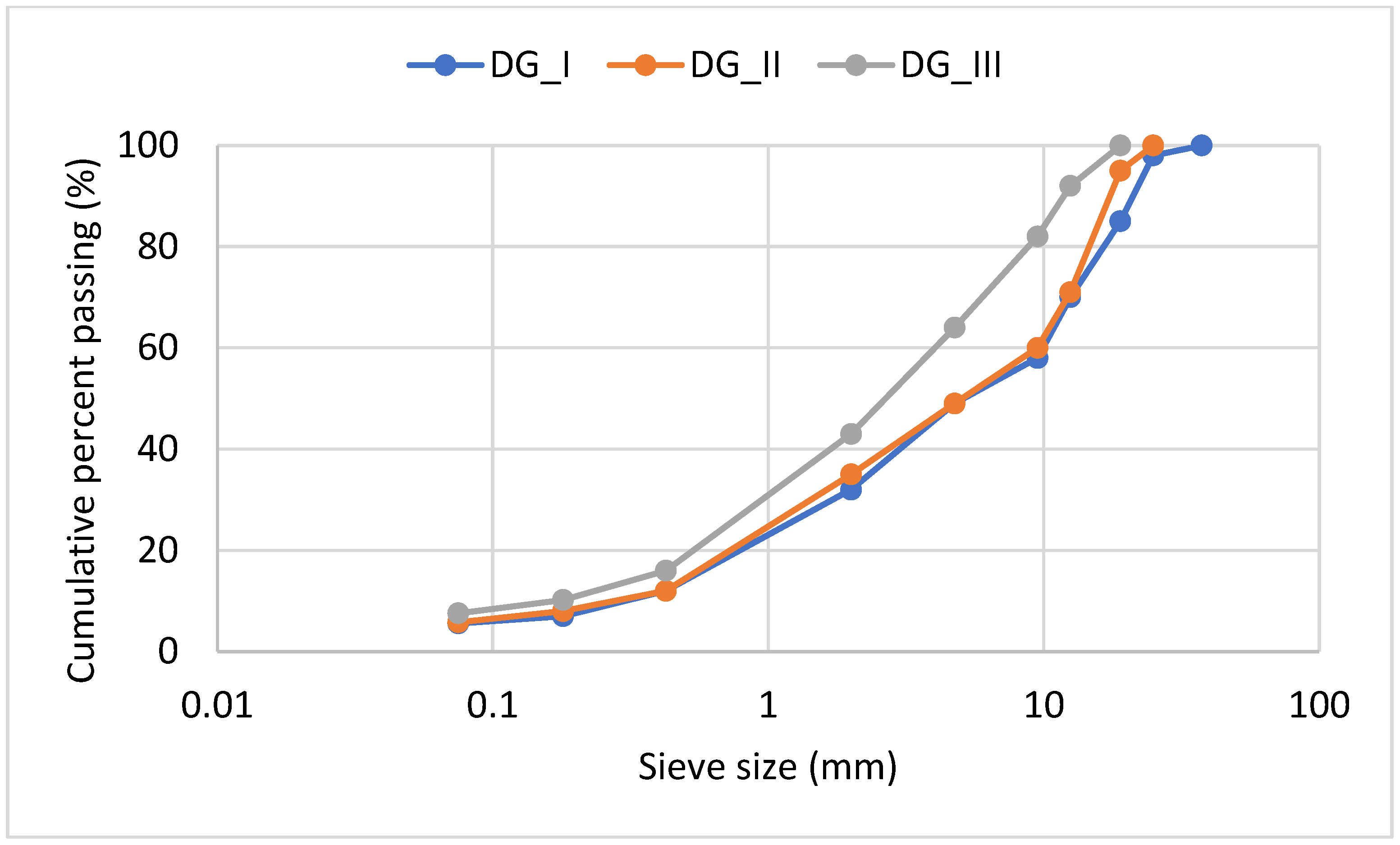
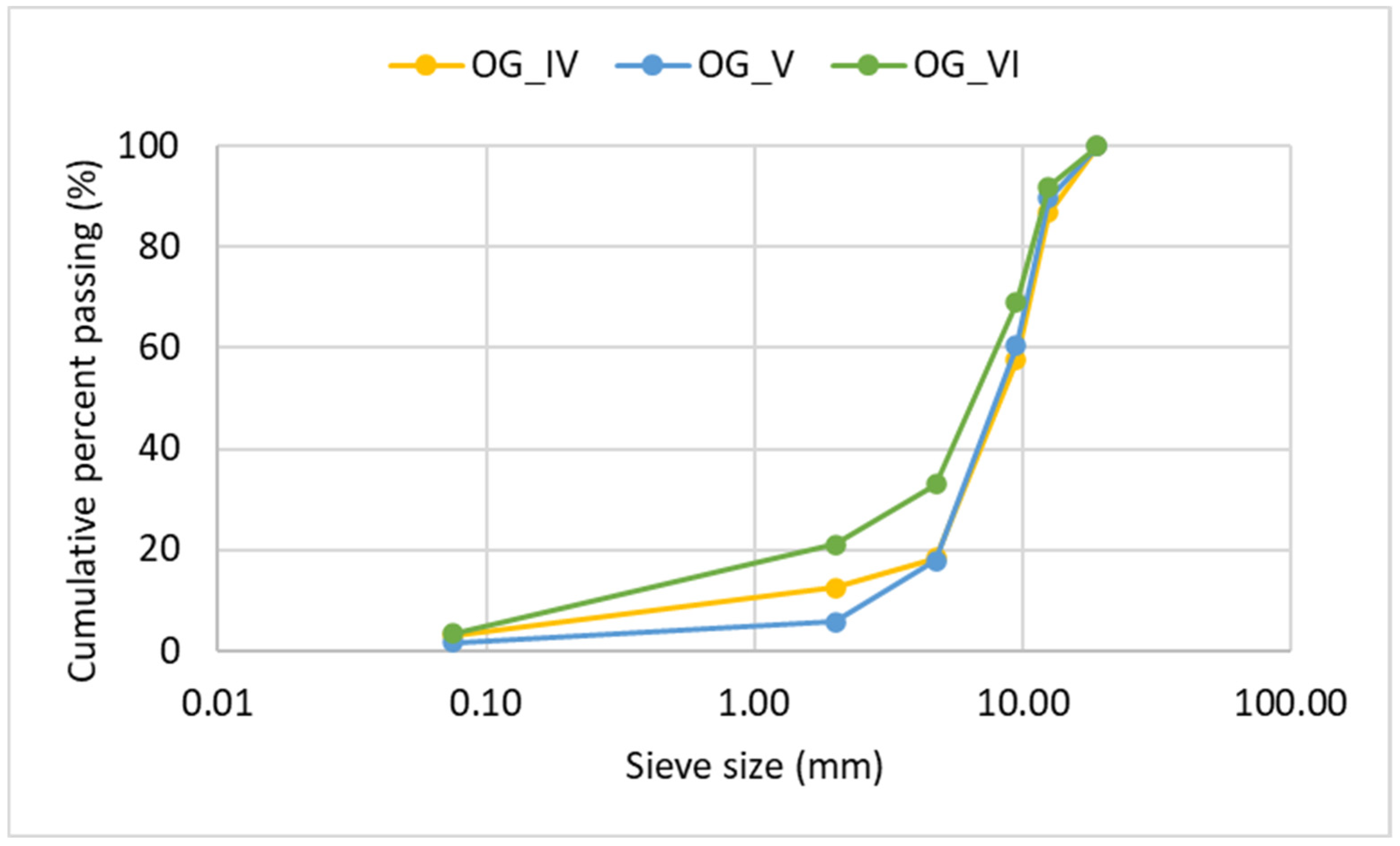
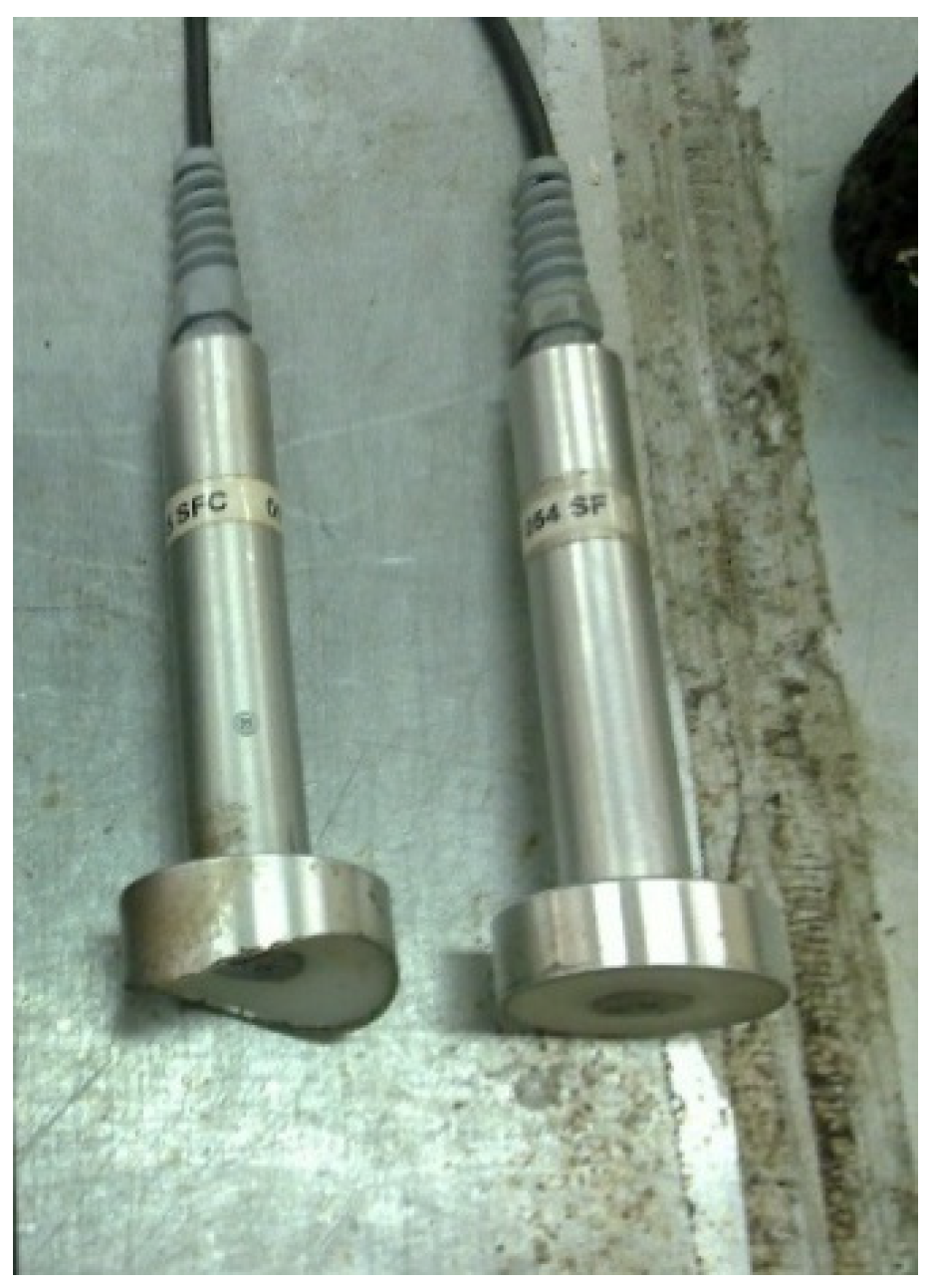
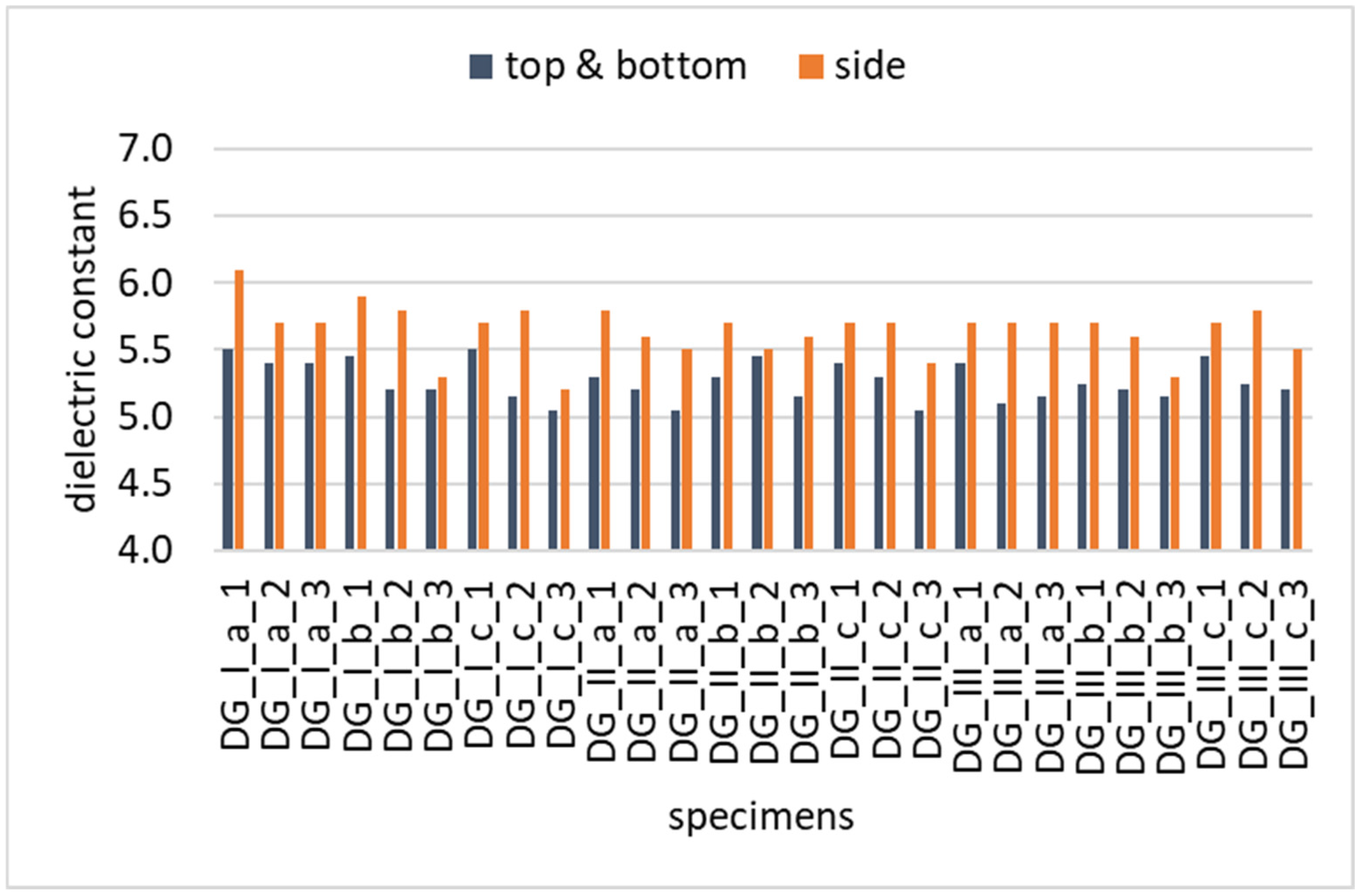
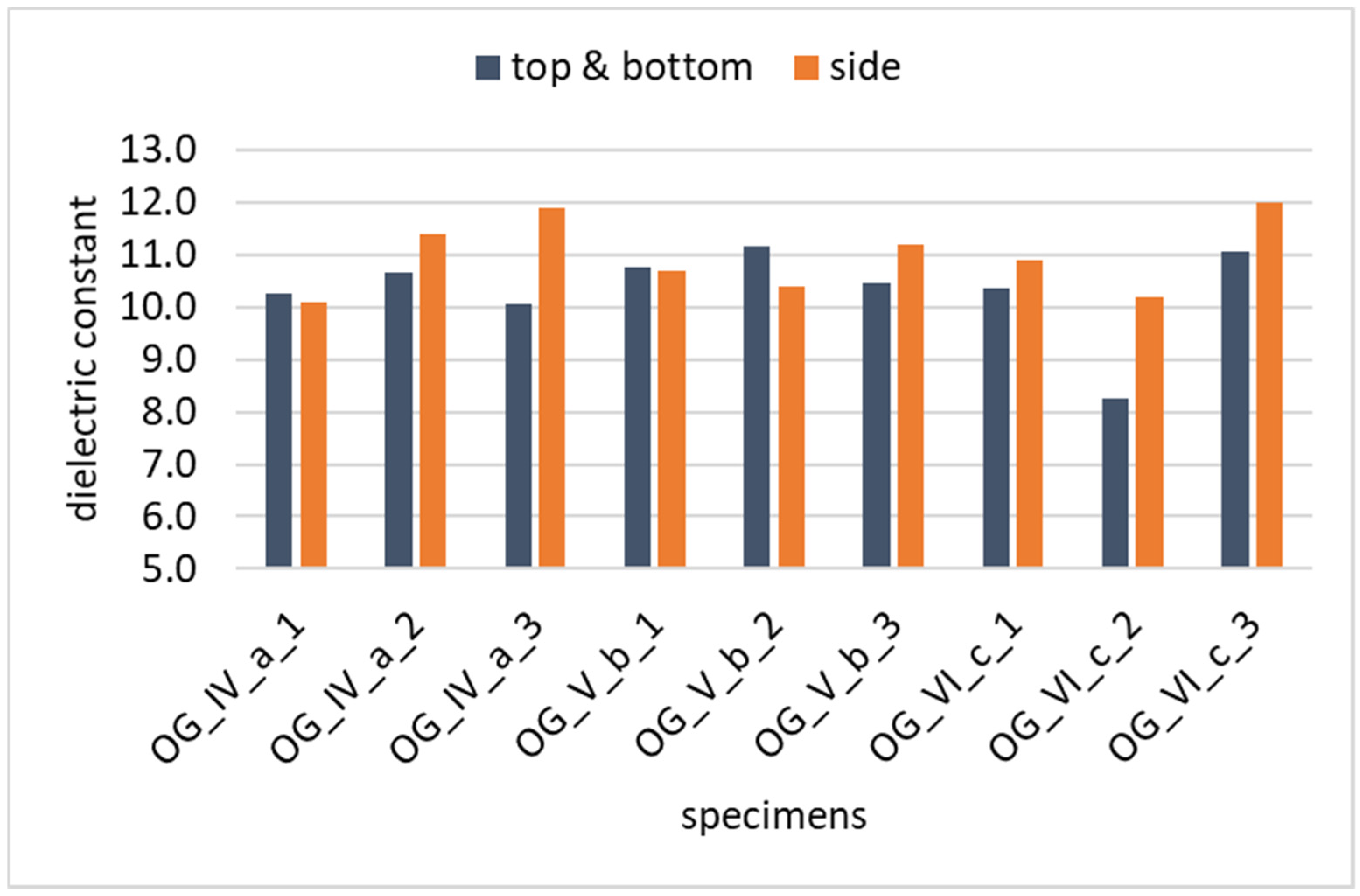

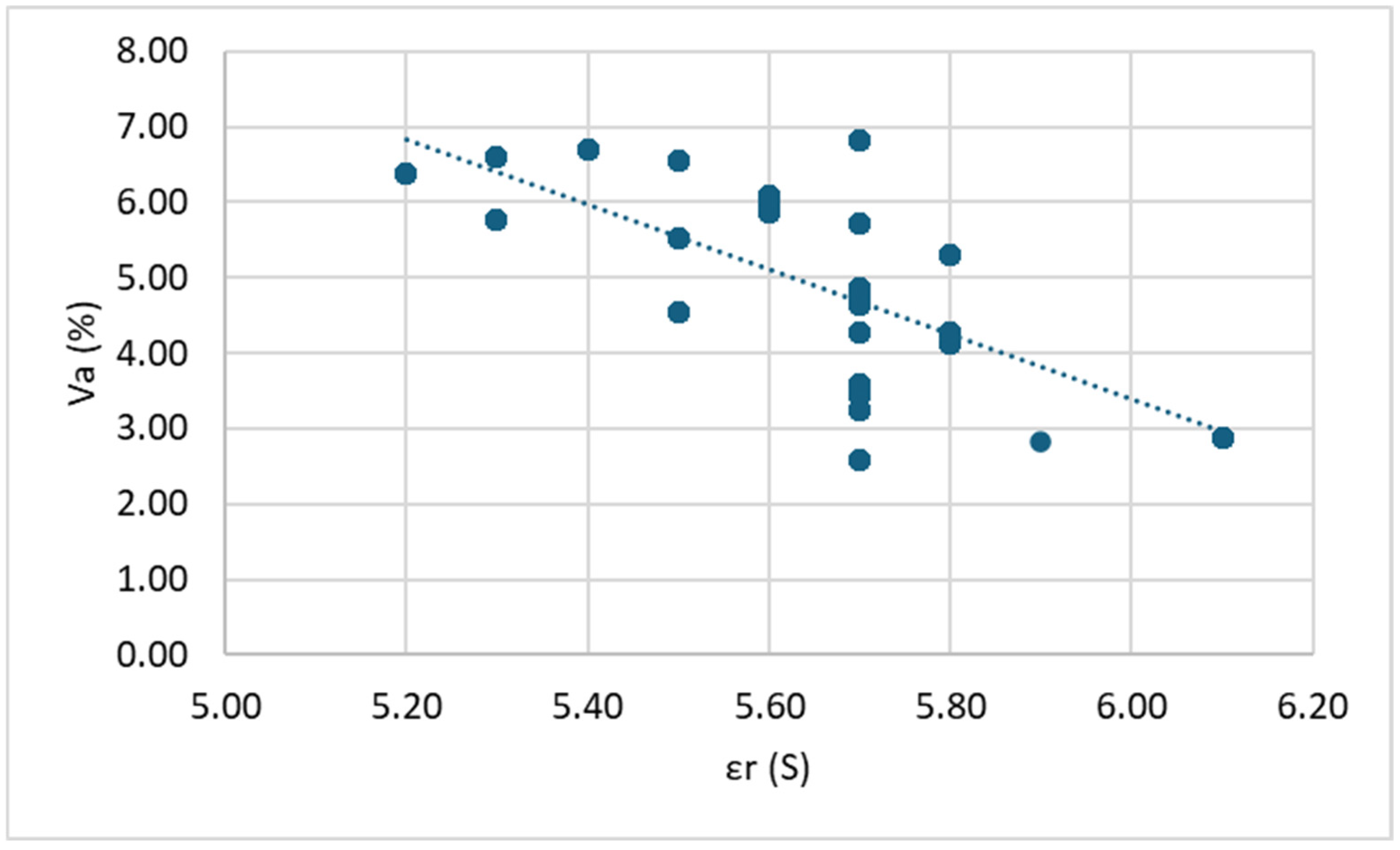
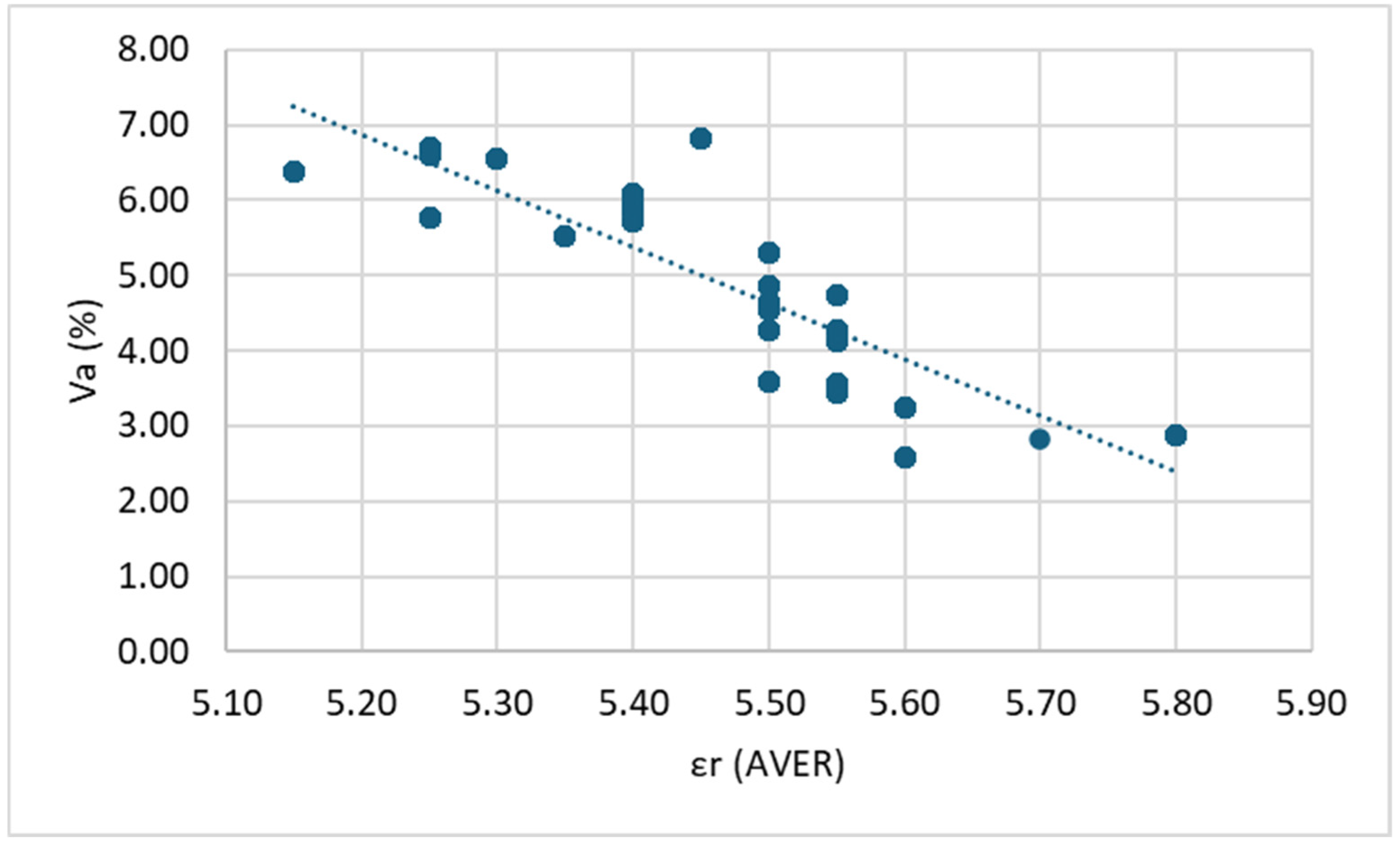
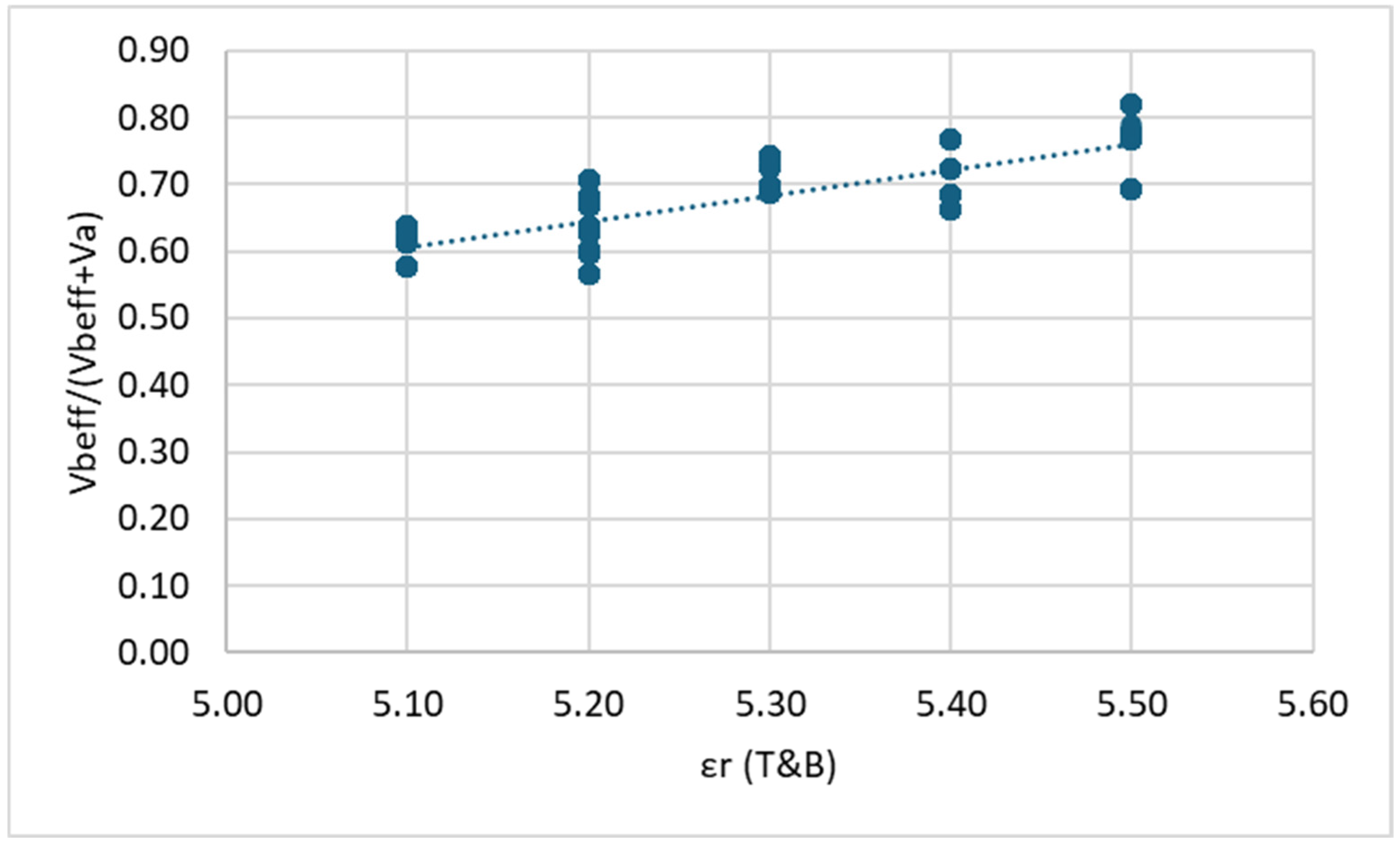
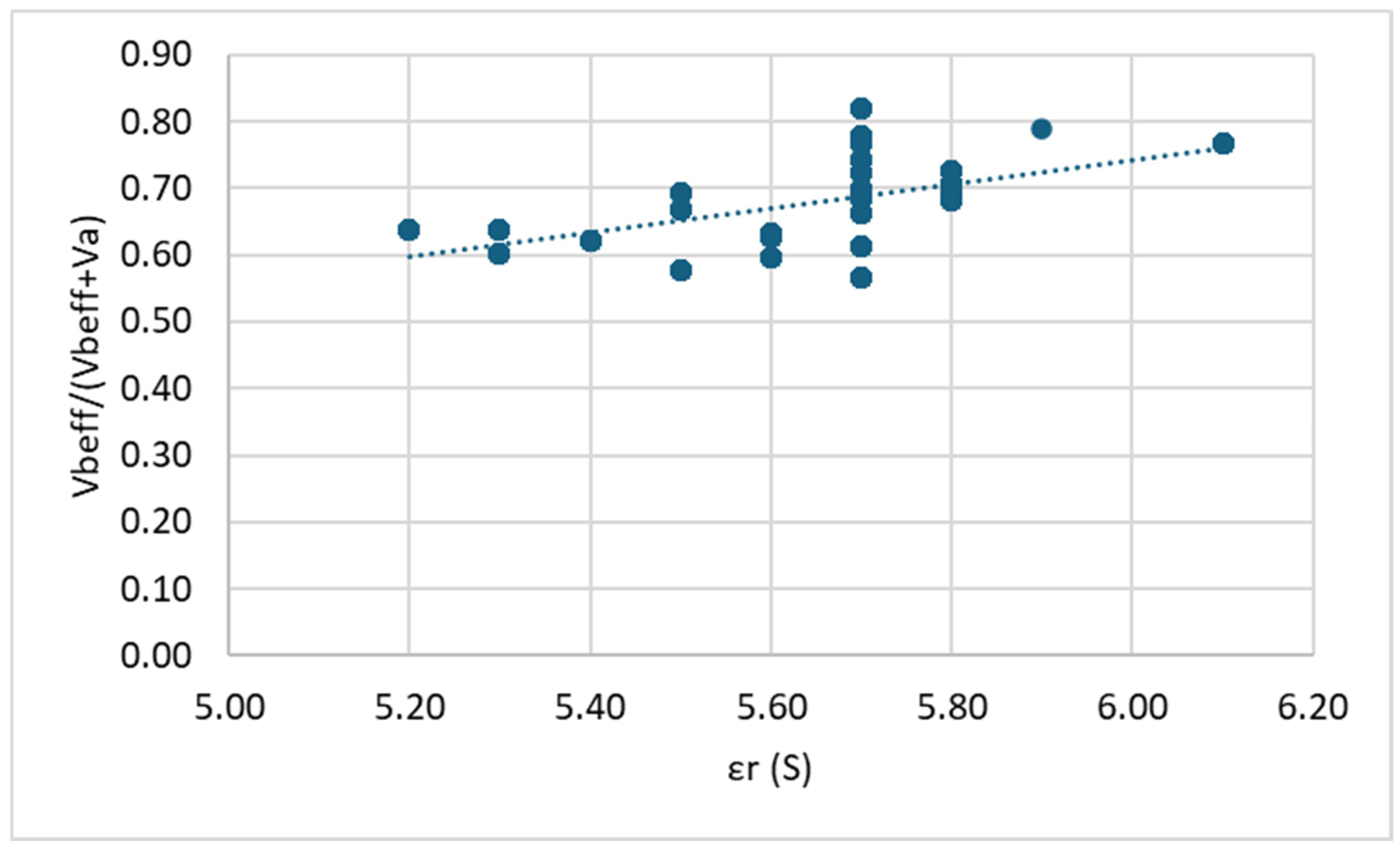

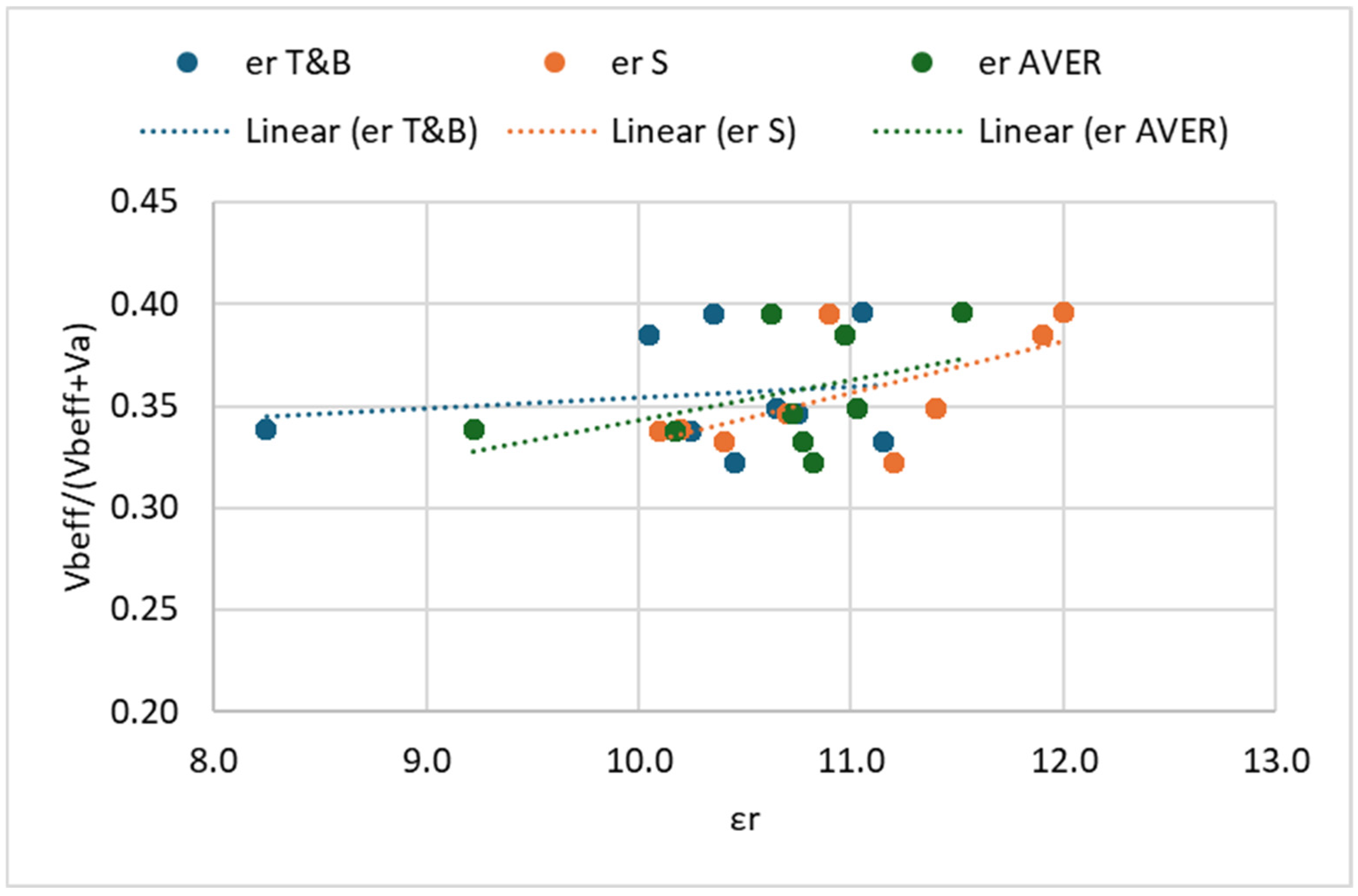
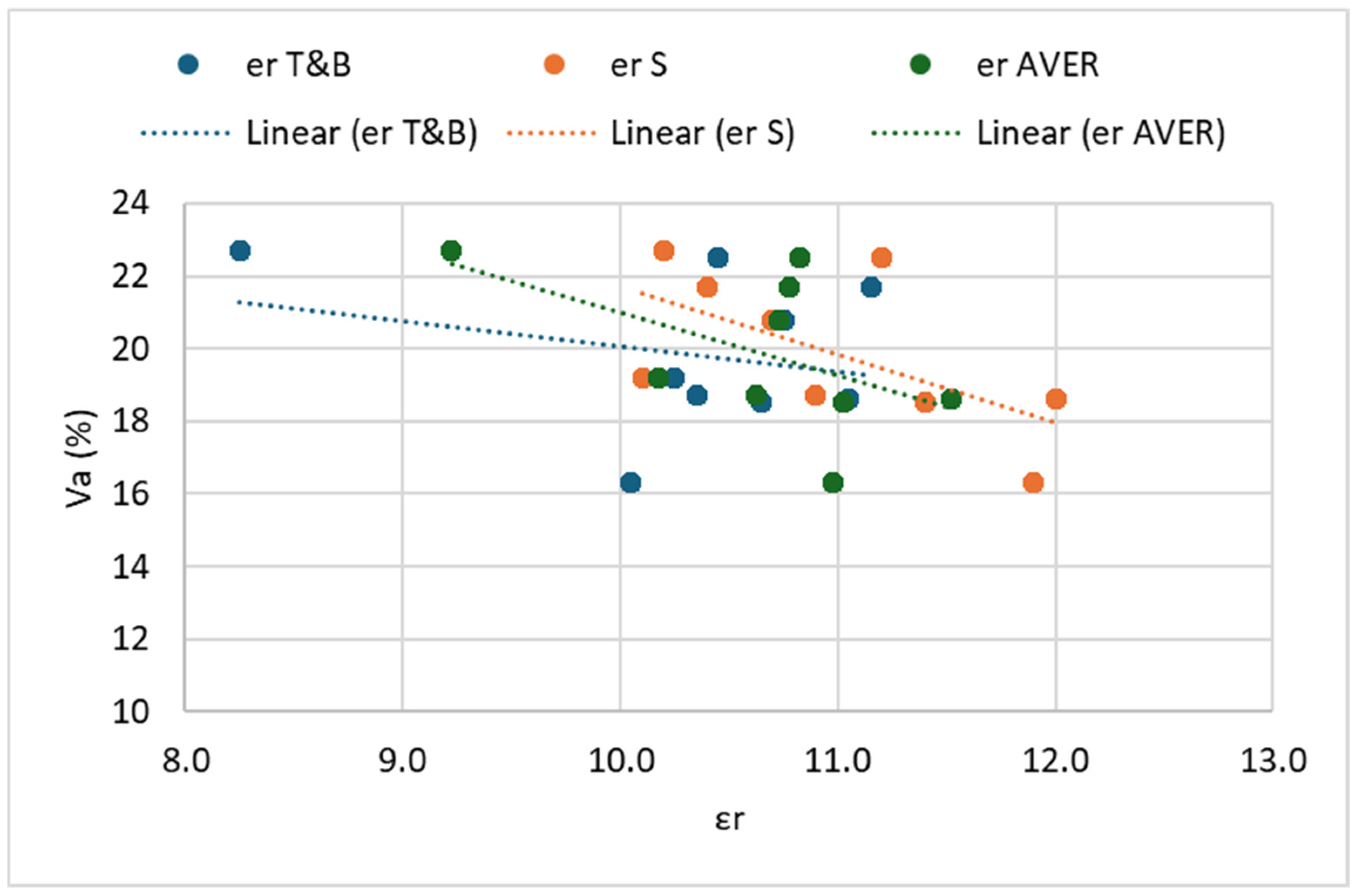
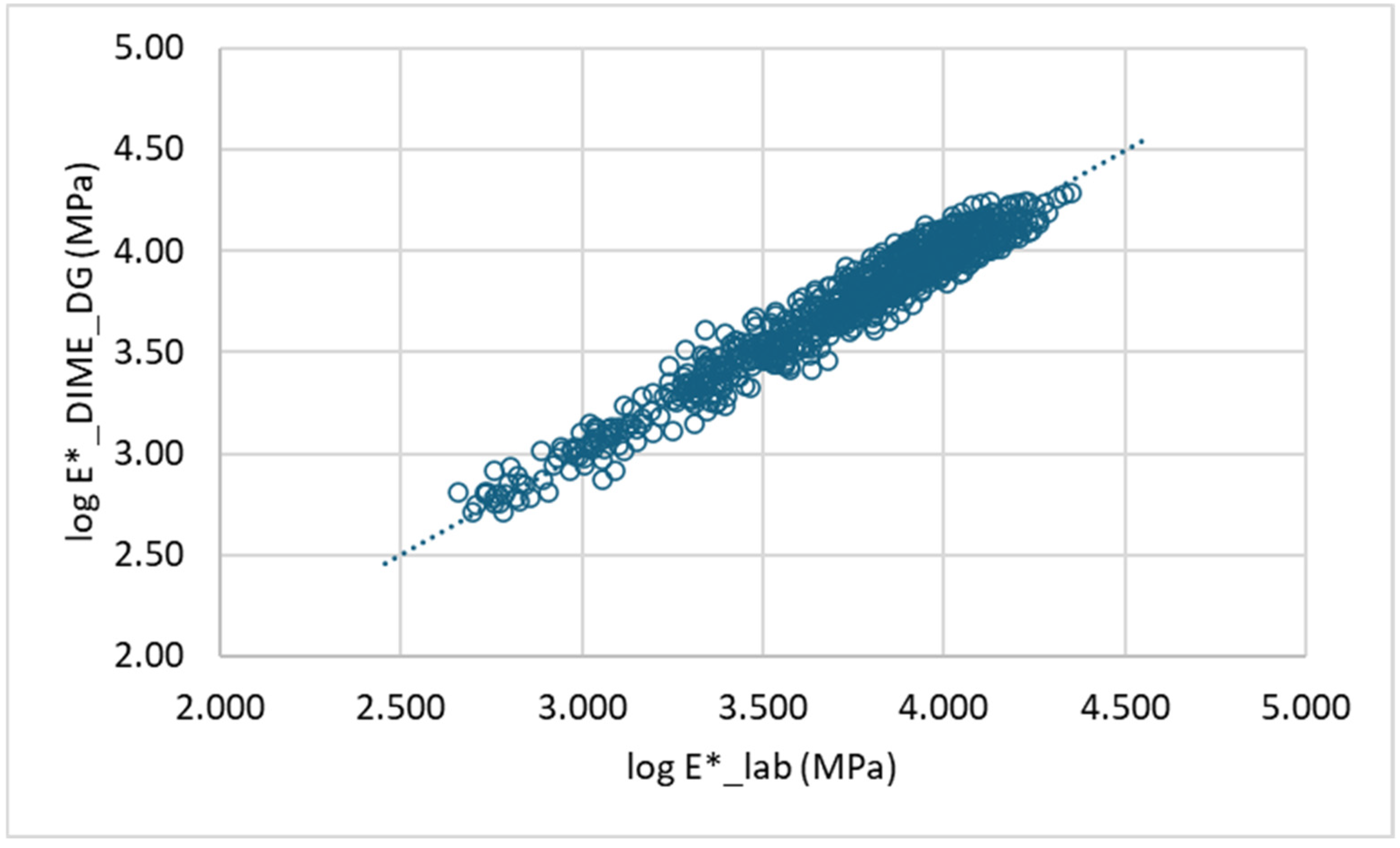

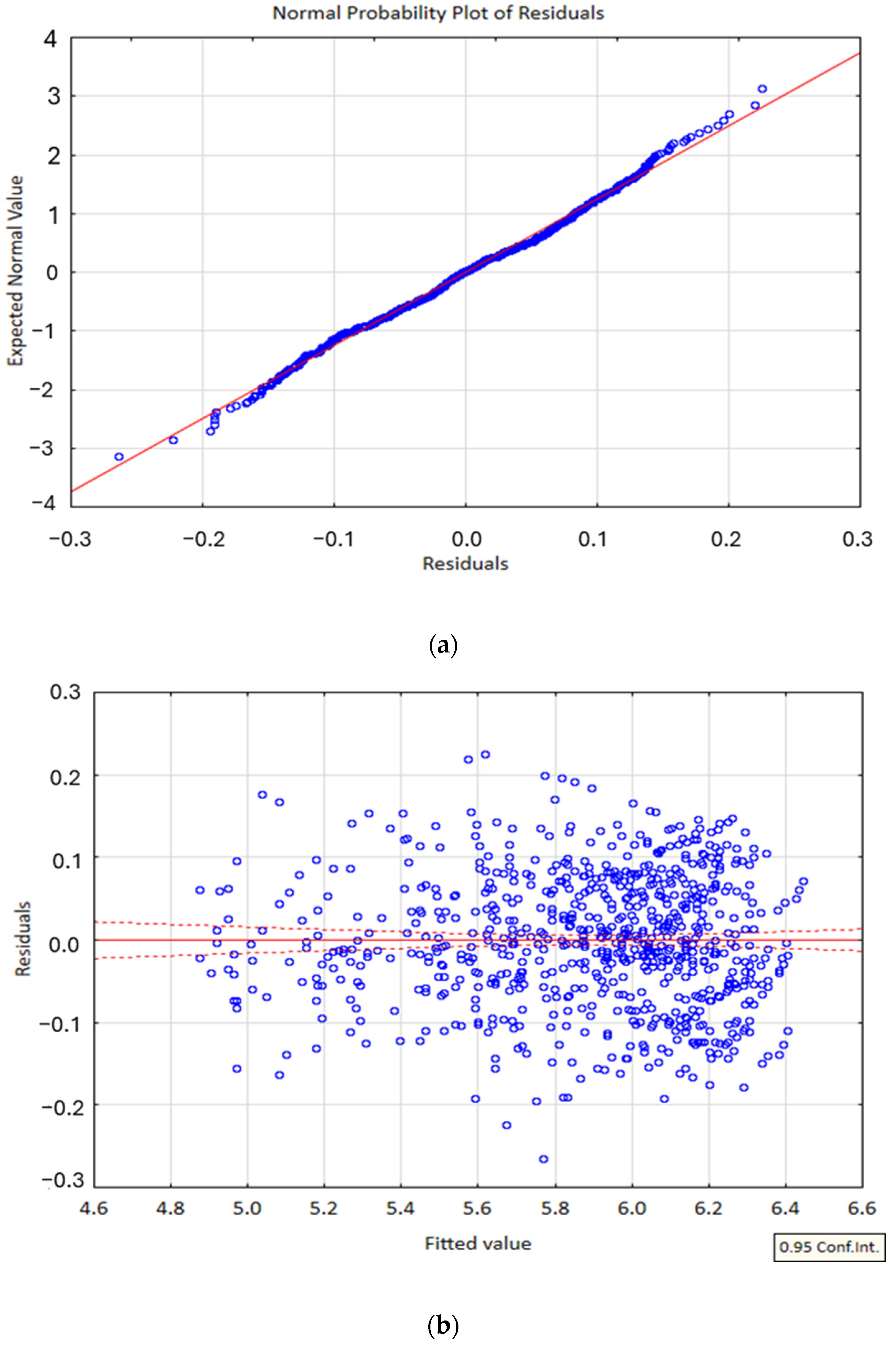
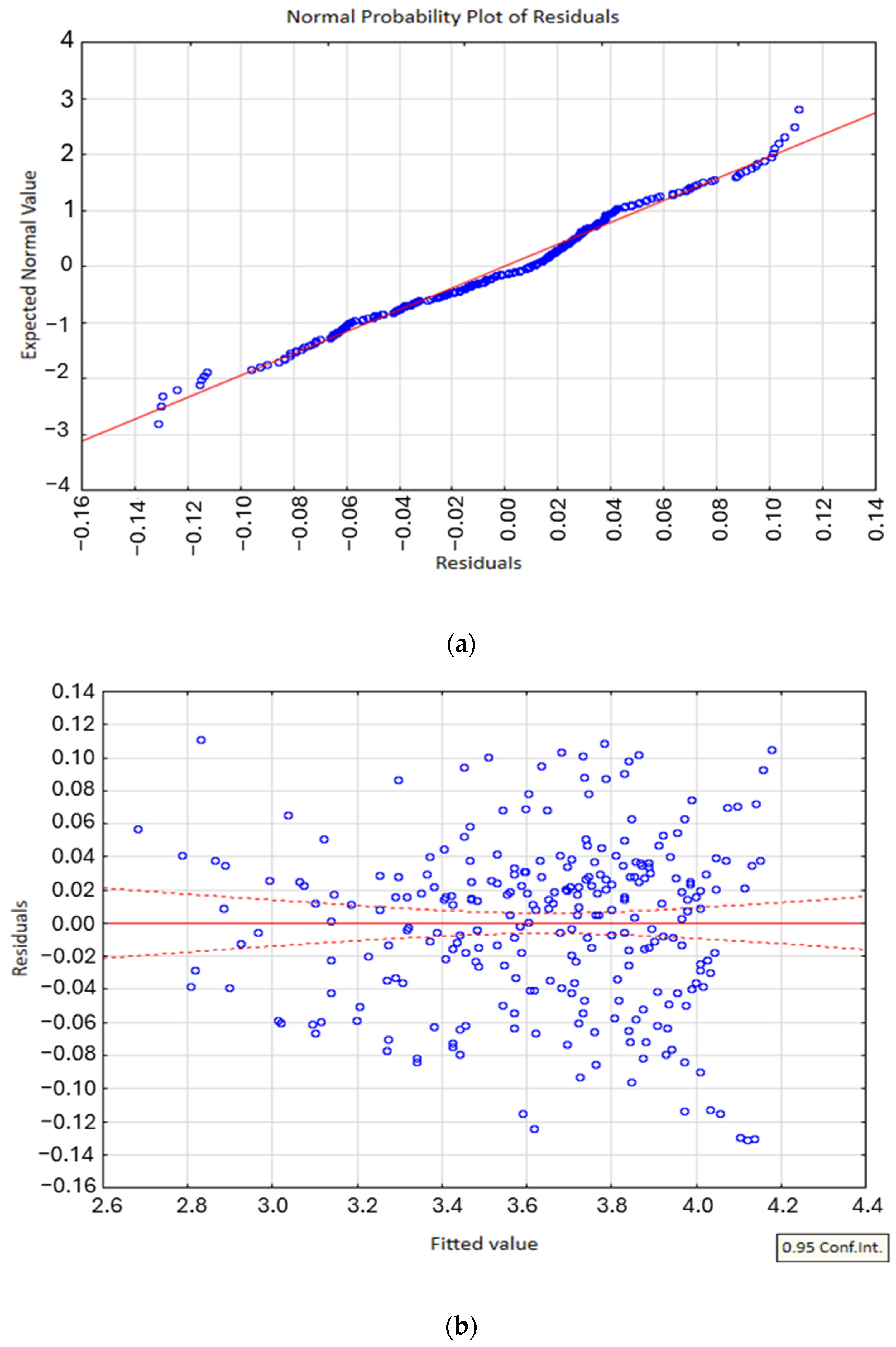
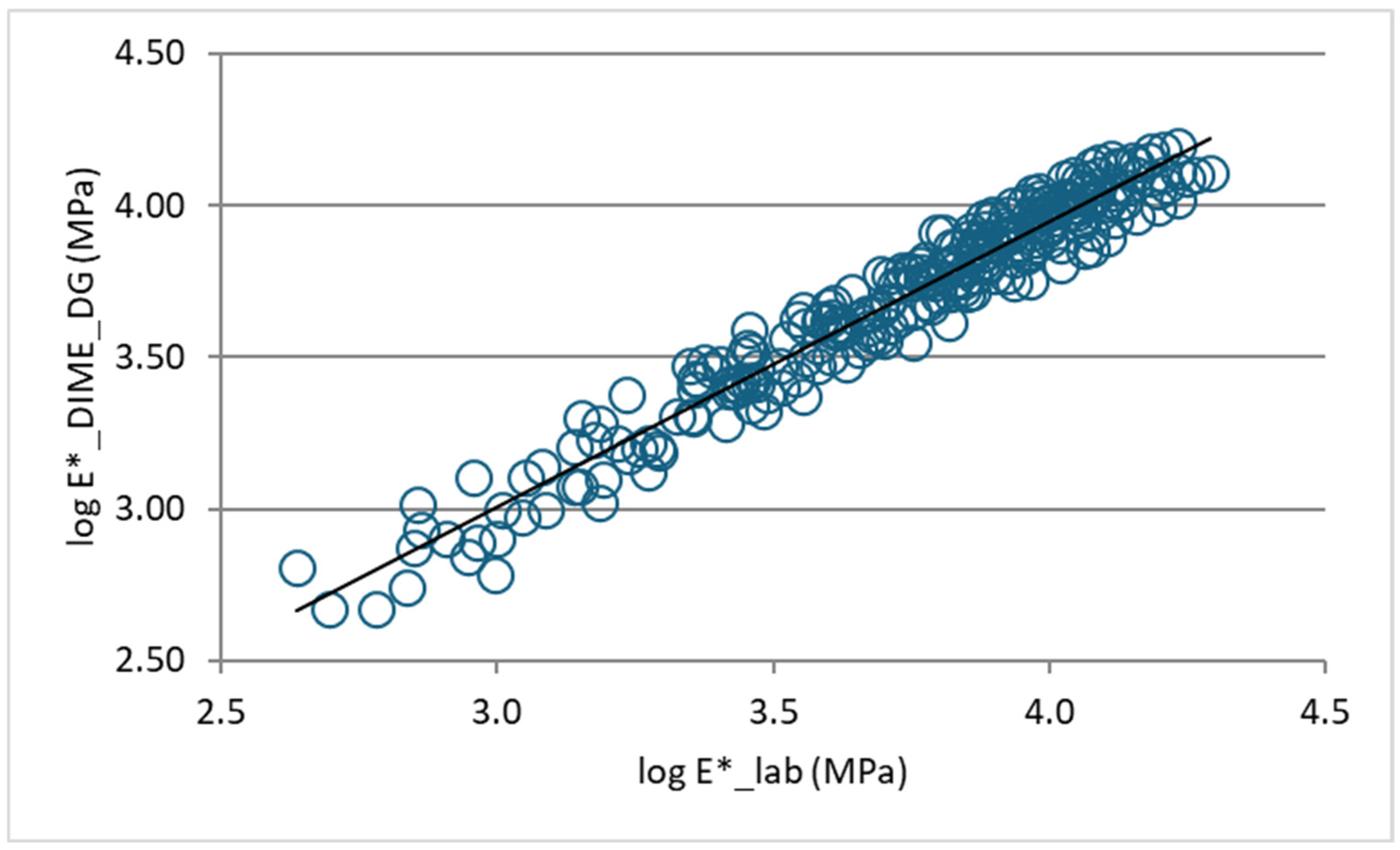
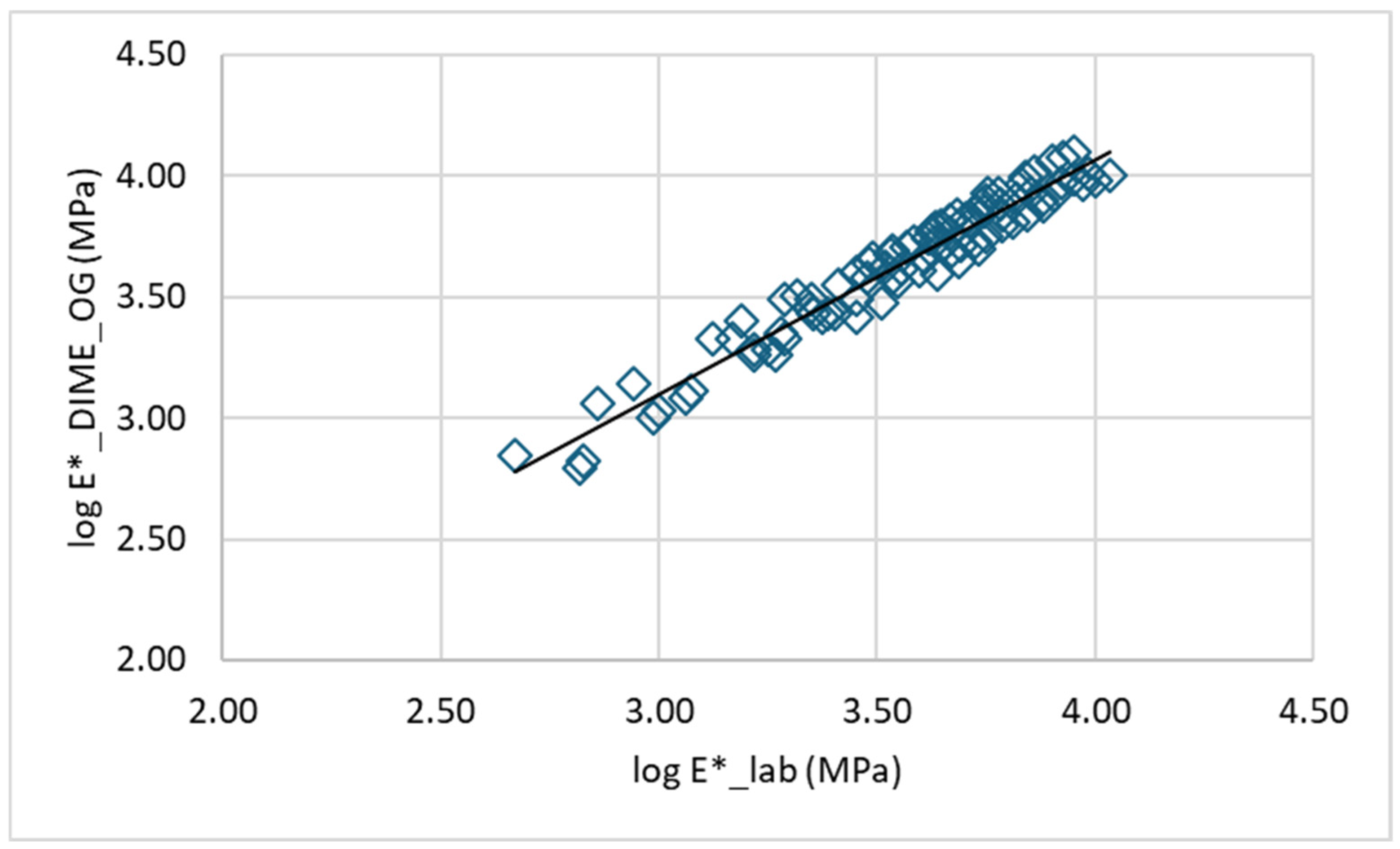
| Encoding | Air Voids—Va (%) | Binder Content—Pb (%) | Encoding | Air Voids—Va (%) | Binder Content—Pb (%) |
|---|---|---|---|---|---|
| DG_I_a_1 | 2.87 | 4 | DG_III_a_1 | 3.55 | 4 |
| DG_I_a_2 | 4.27 | DG_III_a_2 | 5.71 | ||
| DG_I_a_3 | 4.74 | DG_III_a_3 | 6.82 | ||
| DG_I_b_1 | 2.83 | 4.5 | DG_III_b_1 | 4.62 | 4.5 |
| DG_I_b_2 | 4.27 | DG_III_b_2 | 5.86 | ||
| DG_I_b_3 | 5.76 | DG_III_b_3 | 6.59 | ||
| DG_I_c_1 | 2.58 | 5 | DG_III_c_1 | 3.24 | 5 |
| DG_I_c_2 | 5.3 | DG_III_c_2 | 4.27 | ||
| DG_I_c_3 | 6.38 | DG_III_c_3 | 5.53 | ||
| DG_II_a_1 | 4.13 | 4 | OG_IV_a_1 | 19.2 | 4 |
| DG_II_a_2 | 6.09 | OG_IV_a_2 | 18.5 | ||
| DG_II_a_3 | 6.54 | OG_IV_a_3 | 16.3 | ||
| DG_II_b_1 | 3.59 | 4.5 | OG_V_b_1 | 20.8 | 4.5 |
| DG_II_b_2 | 4.54 | OG_V_b_2 | 21.7 | ||
| DG_II_b_3 | 5.98 | OG_V_b_3 | 22.5 | ||
| DG_II_c_1 | 3.45 | 5 | OG_VI_c_1 | 18.7 | 5 |
| DG_II_c_2 | 4.85 | OG_VI_c_2 | 22.7 | ||
| DG_II_c_3 | 6.7 | OG_VI_c_3 | 18.6 |
| Variable Coefficient | E* Predictive Algorithm | |
|---|---|---|
| DG | OG | |
| b1 | 3.900000 | 3.5969 |
| b2 | 0.374370 | 0.0092 |
| b3 | 0.029800 | 0.002 |
| b4 | 0.012210 | 0.00272 |
| b5 | 0.086860 | 0.03108 |
| b6 | 0.942150 | 1.45345 |
| b7 | 3.044830 | 3.8837 |
| b8 | 0.011240 | 0.0098 |
| b9 | 0.002420 | 0.0272 |
| b10 | −0.000250 | 0.00002 |
| b11 | 0.001110 | 0.0206 |
| b12 | 1.076820 | 1.06155 |
| b13 | 0.47006 | 0.33153 |
| b14 | 0.62596 | 0.70639 |
| Correlation | a (Constant) | b (Coefficient) | R2 |
|---|---|---|---|
| DG mixes | |||
| Va–εr (T&B) | 47.181 | −7.9988 | 0.71 |
| Va–εr (S) | 29.242 | −4.3089 | 0.44 |
| Va–εr (AVER) | 45.587 | −7.4455 | 0.71 |
| Vbeff/(Vbeff + Va)–er (T&B) | −1.3395 | 0.3817 | 0.62 |
| Vbeff/(Vbeff + Va)–er (S) | −0.3394 | 0.1801 | 0.29 |
| Vbeff/(Vbeff + Va)–er (AVER) | −1.1347 | 0.3317 | 0.54 |
| OG mixes | |||
| Va–εr (T&B) | 27.055 | −0.6965 | 0.08 |
| Va–εr (S) | 40.628 | −1.89 | 0.38 |
| Va–εr (AVER) | 38.24 | −1.7249 | 0.27 |
| Vbeff/(Vbeff + Va)–er (T&B) | 0.3017 | 0.0053 | 0.03 |
| Vbeff/(Vbeff + Va)–er (S) | 0.0752 | 0.0256 | 0.40 |
| Vbeff/(Vbeff + Va)–er (AVER) | 0.1466 | 0.0197 | 0.20 |
| Model | εr (T&B) | εr (S) | εr (AVER) |
|---|---|---|---|
| DG mixes | |||
| SSE | 4.86 | 6.67 | 5.70 |
| OG mixes | |||
| SSE | 0.67 | 0.65 | 0.85 |
| Variable Coefficient | DIME_DG | DIME_OG |
|---|---|---|
| b1 | 3.709876 | 2.130267 |
| b2 | −0.361994 | 0.016106 |
| b3 | −0.023539 | 0.000464 |
| b4 | 0.016415 | 0.003936 |
| b5 | −0.435125 | −0.06413 |
| b6 | 3.325778 | 3.75791 |
| b7 | −2.969755 | 0.024747 |
| b8 | −7.802334 | 0.052546 |
| b9 | −0.100121 | 1.85 × 10−5 |
| b10 | −0.078894 | 0.0206 |
| b11 | 0.819625 | 1.013592 |
| b12 | 0.533917 | 0.354145 |
| b13 | 0.671755 | 0.757739 |
| Encoding | Air Voids—Va (%) | Dielectric Value—εr |
|---|---|---|
| DG_I_a_4 | 5.71 | 5.2 |
| DG_I_b_4 | 5.40 | 5.4 |
| DG_I_b_4 | 4.23 | 5.1 |
| DG_II_a_4 | 3.61 | 5.4 |
| DG_II_b_4 | 6.38 | 5.0 |
| DG_II_b_4 | 5.61 | 5.0 |
| DG_III_a_4 | 4.93 | 5.3 |
| DG_III_b_4 | 3.21 | 5.4 |
| DG_III_b_4 | 6.85 | 5.2 |
| OG_IV_a_4 | 17.5 | 9.4 |
| OG_V_b_4 | 21.6 | 10.6 |
| OG_VI_c_4 | 19.6 | 10.5 |
Disclaimer/Publisher’s Note: The statements, opinions and data contained in all publications are solely those of the individual author(s) and contributor(s) and not of MDPI and/or the editor(s). MDPI and/or the editor(s) disclaim responsibility for any injury to people or property resulting from any ideas, methods, instructions or products referred to in the content. |
© 2025 by the authors. Licensee MDPI, Basel, Switzerland. This article is an open access article distributed under the terms and conditions of the Creative Commons Attribution (CC BY) license (https://creativecommons.org/licenses/by/4.0/).
Share and Cite
Georgouli, K.; Loizos, A. Dielectric-Based Estimation of HMA Dynamic Modulus. Constr. Mater. 2025, 5, 43. https://doi.org/10.3390/constrmater5030043
Georgouli K, Loizos A. Dielectric-Based Estimation of HMA Dynamic Modulus. Construction Materials. 2025; 5(3):43. https://doi.org/10.3390/constrmater5030043
Chicago/Turabian StyleGeorgouli, Konstantina, and Andreas Loizos. 2025. "Dielectric-Based Estimation of HMA Dynamic Modulus" Construction Materials 5, no. 3: 43. https://doi.org/10.3390/constrmater5030043
APA StyleGeorgouli, K., & Loizos, A. (2025). Dielectric-Based Estimation of HMA Dynamic Modulus. Construction Materials, 5(3), 43. https://doi.org/10.3390/constrmater5030043





